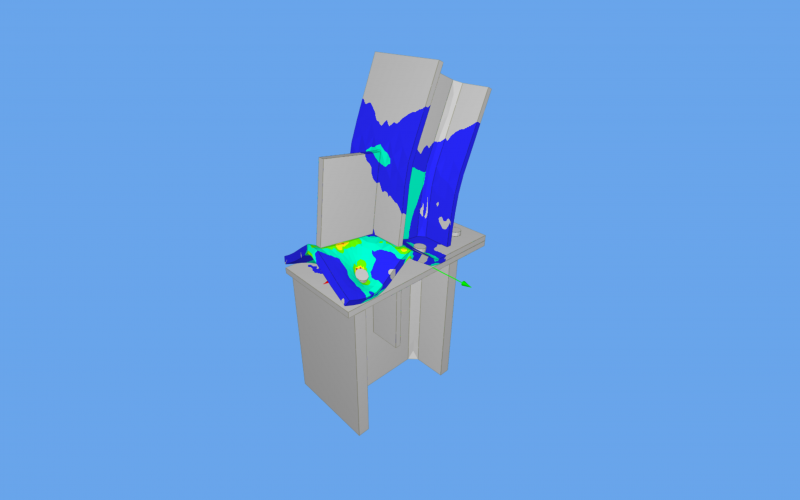Earthquake resistant design using FE˛ technique
EGIS INDUSTRIES (End User) is a French Consultancy firm undertaking civil engineering projects. STRAINS (ISV) is a French SME specialized in the development of civil engineering software. It offers consultancy to a wide variety of clients. EPCC (HPC Provider) is a UK HPC centre at the University of Edinburgh.
The Challenge
Evaluating the reliability of civil engineering structures under extreme loads (earthquake, explosions, flooding, etc.) requires non-linear static and dynamic analyses. To be accurate, these analyses must pay specific attention to structural details which are more likely to contribute to failure. The demand for these kinds of analysis is increasing and is becoming mandatory. These analyses are mostly done by SMEs, but the computing resources needed to generate exploitable results within a reasonable time and cost clearly exceed in-house capabilities.
The Solution
Digital-Structure is a cloud platform with multiple software solutions for structural analysis. The product was further developed during the Fortissimo experiment to address non-linear dynamics involving the behaviour of non-linear materials and resultant friction. This product has a highly robust convergence in comparison with traditional Finite Element Software. The data structure is optimised for parallel computing: a local scale assesses the plastic behaviour of local steel joints and a global scale evaluates the dynamic behaviour of the structure. These computations require a huge amount of computing power making HPC resources necessary. Since HPC infrastructure is very expensive for SMEs, a cloud-based solution on a pay-per-use basis offers the best way to control costs.
Business Impact
Using Digital-Structure with its CAD or data import tools, users can design a complete steel structure and its joints on the web platform. Improving the resistance and behaviour of the structure is easy: loads can be defined and elastic, elastoplastic, yield, and dynamic analyses using HPC technology can be launched even when a significant level of compute resources is needed.
Digital-Structure significantly reduces engineering time thanks to fast computations, complete workflows (from CAD to building standards verifications) and a user-friendly interface dedicated to civil engineering. Using the software is very intuitive and there are no maintenance actions required (installations, updates, license, etc.). Computing times are much faster thanks to the use of HPC infrastructure. The reduction in cost of designs for an SME is estimated to be between 40% and 60%. Overall these factors can double the productivity of an engineer.
As a consequence, Digital-Structure enables users to optimise designs, determine finer and more accurate security margins and reduce environmental impact and production costs. Its use can results in a significant increase in the value of an SME’s structural designs.
Benefits
- Engineers' productivity doubles using Digital-Structure.
- The value of consultancy projects increases by at least 20 % thanks to finer security margins and optimised designs.
- Effective control of computing resource costs and risks.
Organizations Involved
End User: EGIS Industries
ISV: STRAINS
HPC Provider: EPCC







